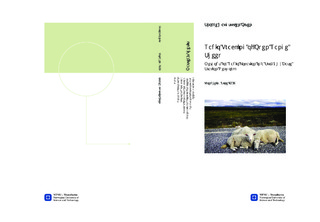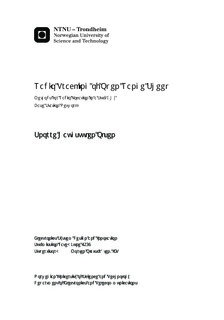| dc.contributor.advisor | Olavsbråten, Morten | nb_NO |
| dc.contributor.author | Olsen, Snorre Haugstulen | nb_NO |
| dc.date.accessioned | 2014-12-19T13:50:10Z | |
| dc.date.accessioned | 2015-12-22T11:51:00Z | |
| dc.date.available | 2014-12-19T13:50:10Z | |
| dc.date.available | 2015-12-22T11:51:00Z | |
| dc.date.created | 2014-09-24 | nb_NO |
| dc.date.issued | 2014 | nb_NO |
| dc.identifier | 749694 | nb_NO |
| dc.identifier.uri | http://hdl.handle.net/11250/2371123 | |
| dc.description.abstract | This thesis aims to compare methods of radio location for the purpose of tracking sheep by using sub-GHz radio transceivers arranged in a base station network. Nearly 10% of free-grazing sheep in Norway are lost every year, creating losses for both farmers and the government. Tracking technology may reduce these losses. Existing tracking solutions based on GPS and GSM are commercially available, but previous research shows that poor signal conditions in grazing areas limit their efficacy. An alternative tracking system using the low-power CC1120 transceiver from Texas Instruments is outlined and evaluated for the two following methods of radio location. Hyperbolic trilateration uses time difference of arrival (TDoA) estimates for receiver pairs and circular trilateration uses received signal strength (RSSI) to perform radio location. Initial measurements show that the transceiver alone should not be used for TDoA estimation because its trigger signals are only accurate to within 25% of the predetermined symbol interval. In future work, TDoA can be estimated by comparing the bit streams taken directly from the A/D-converter (ADC) of two base stations. This requires additional hardware but is expected to be accurate enough to locate sheep.A small-scale outdoors radio location experiment was carried out using RSSI measurements from the CC1120, and circular trilateration with three base stations approximately 200 m apart. A propagation model was fitted to calibration data using linear regression. Position estimates were calculated by both linear and non-linear least squares approximation using MATLAB. The average error of the position estimates was 55.8 m. The error in the full-scale system for this method is estimated to be several kilometres, too large for tracking sheep.In conclusion, the TDoA-based hyperbolic trilateration method is the only one showing promise. Challenges related to synchronicity between the base stations are expected to be met using GPS receivers. Additional work with extracting the bit streams is required before the TDoA can be estimated with sufficient accuracy. | nb_NO |
| dc.language | eng | nb_NO |
| dc.publisher | Institutt for elektronikk og telekommunikasjon | nb_NO |
| dc.title | Radio Tracking of Open Range Sheep: Methods for Radio Location in a Sub-GHz Base Station Network | nb_NO |
| dc.type | Master thesis | nb_NO |
| dc.source.pagenumber | 105 | nb_NO |
| dc.contributor.department | Norges teknisk-naturvitenskapelige universitet, Fakultet for informasjonsteknologi, matematikk og elektroteknikk, Institutt for elektronikk og telekommunikasjon | nb_NO |

